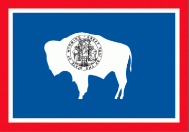The state’s history is closely tied to the Old West, and it was the first state to grant women the right to vote. Wyoming is also home to the first national park, first national forest, and first national monument in the U.S.
Wyoming has a diverse economy, with industries ranging from agriculture and mining to tourism and energy production. The state is a major producer of coal, natural gas, and petroleum, and it is also home to many wind farms.
The state’s capital is Cheyenne, which is located in the southeastern part of the state. Other major cities in Wyoming include Casper, which is known for its oil and gas industry, and Laramie, which is home to the University of Wyoming.
One of the most popular attractions in Wyoming is Yellowstone National Park, which is known for its geothermal features such as geysers and hot springs. The park is also home to a variety of wildlife, including bears, bison, and elk.
Grand Teton National Park is another popular destination in Wyoming, known for its stunning mountain views and outdoor recreational opportunities such as hiking, fishing, and rock climbing. The park is also home to the Teton Range, a group of peaks that rise more than 7,000 feet above the surrounding landscape.
In addition to its national parks, Wyoming also has many other outdoor recreational opportunities. The state is home to numerous lakes and rivers, as well as forests, mountains, and grasslands. It is a popular destination for hunting, fishing, and other outdoor sports.
Wyoming is also home to many cultural attractions, including museums, art galleries, and historical sites. The state has a rich cowboy and western history, and it is home to many rodeos and other events that celebrate this heritage.
Racism exists in every corner of the world, and Wyoming is no exception. While the state has a small population and a reputation for being a “white” state, there is a long history of racial discrimination and inequality in Wyoming.
One of the most well-known examples of racism in Wyoming is the case of the Wyoming Massacre of 1892. This event, also known as the Johnson County War, was a range war that took place in northern Wyoming. At the time, Wyoming was experiencing a cattle boom, and many large cattle companies were competing for land and resources.
The conflict eventually escalated into a full-blown war, with the cattle companies hiring a group of gunmen to attack a group of small farmers and ranchers who they saw as a threat to their business. The gunmen killed several people, including men, women, and children, and the event became known as the Wyoming Massacre.
While the Wyoming Massacre was a particularly violent and extreme example of racism in the state, it is not the only example. There have been many instances of racial discrimination in Wyoming throughout its history, including segregation in schools and public places, and discrimination in housing and employment.
Racism is still a persistent problem in the state of Wyoming.














You must be logged in to post a comment Login